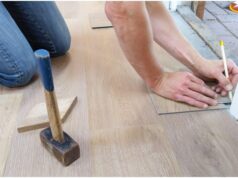Most of us consider sculptures as reserved for museums, art galleries, and expansive celebrity mansions, but sculptures of all sizes and styles of the sculptures you choose, they can be an excellent addition to your home. No matter you buy Indian art or go for something more contemporary one with Western influence, you will find that sculptures are more interactive and powerful than any painting or photograph. However, it is essential that you pay special attention while finding a display space for it.


There are endless possibilities for adding sculptures to your home — you can place it on a pedestal, plinth, shelf, table, suspend it from the ceiling or even arrange them in a group according to a theme, era, or type, such as vintage Indian sculptures for a traditional/historical theme. But remember that the way you display it is often just as important as the piece itself — it will determine whether the sculpture will be a significant complement to your room’s decor, a mere superfluous piece of accessory or a barely noticeable addition.
We have compiled some tips and tricks to help you display your sculpture correctly.
Find the Perfect Location
Sculptures should be positioned in a spot where it is properly visible and can be explored by the viewer from different sides. So, ensure to find a space with unobstructed views for large or medium-sized sculpture, you can even consider using a plinth or pedestal for such massive pieces. Additionally, there are practical considerations to be taken care of such as the availability of enough room for walking or other activities, such as watching TV with the family. Before deciding on the best location, take time to experiment with different arrangements so that you don’t freeze a spot where the piece ends up becoming a frustrating obstruction.
If your sculpture is ten inches tall or smaller, you should ideally place it on a table, desk, or shelf or probably at a place close to you. While the large sculptures would look good in the center of a room or outside on a patio or outside in a garden, however, be mindful of its material too.
Put Themes to Use
You can opt for Asian-inspired sculptures for giving a sophisticated and elegant look in your living room or bedroom. You can buy Indian art, add candles and vases to accent the small figurines on a shelf, or layout the large, paired sculptures in a foyer to transform your hallway into space with a commanding presence.
For the dressing area, go for Cherub statuettes. Capable of adding levity and light to any space, these pieces also work well in a large bathroom. If paired with votive candles, flower arrangements, these cherub pieces can create a tranquil spot in your home. And if you place them alongside small-sized heart-shaped sculptures, your perfect love theme is in action.
Small, zoo, or circus-themed sculptures can infuse a touch of whimsy to a family room, while a spike sculpture will add an edgy, contemporary look to your room.
Place a Group of Sculptures
You can consider arranging several sculptures into different groups according to a theme, era, or type. You may create a zoo theme using a few animal sculptures, layout a contemporary set up with geometric shapes, or arrange historical themes with traditional Indian sculptures.
Sometimes you may want to go for a bohemian mixed look incorporating use several unrelated sculptures, just follow your heart but ensure to choose eye-catching sculptures, not something to merely fill up space. Also, plan them in a fashion so that the sculpture arrangement complements the look and adds visual flair to the immediate space.
Unfurl Your Creativity in Small Spaces
If you use your creativity, you can display a sculpture of any kind brilliantly in your home. Don’t limit yourself to the traditional setup and explore unconventional yet interesting ways to display the sculptures, for example, you can put an abstract granite sculpture beneath a bench in the entryway or hang a shelving unit to exhibit small themed pieces, like an uncanny collection of fancy decanters. Or, maybe place a bust on a floating shelf hung on the space above the sofa or create a faux anchor for you’re for coffee table book with a whimsical sculpture.
Although the living room is often considered the most obvious place for sculpture, you can place them at other non-traditional spaces such as in your dining space, you can place a set of figurines on a pedestal or in a crockery cabinet with a glass window, this will add a pop of color to the arena.
Throw Light on Your Sculptures
While positioning the sculptures in the home, it is essential that you use the right amount of light on and around so that it looks at its best. Natural light and diffused lighting from different sources can help to highlight the pieces without camouflaging their colors, details, and features. In case you choose transparent sculptures for your home, put it on a lighted pedestal. It will help emphasize their best features.
Here are some tips to help you light the sculptures correctly:
- Avoid putting lights immediately below a sculpture, as it gives the piece an eerie glow.
- Never light the sculpture from behind, as it will make the art difficult to see.
- Also, make sure that the sculpture is not bathed in distracting shadows.
Choose the Right Pedestal
Whilst small sculptures add the element of oomph to shelves, desks, and tables, larger sculptures help break up the monotony in a neutral space by creating an attractive anchor in the space. Whatever be the scale of your artwork, always ensure that its base should not be one that competes with it for the viewer’s attention.
Here are some useful points to keep in mind:
- Choose a base that’s sturdy and strong enough to hold the sculpture properly. Carefully go through the product description of the pedestal so as to get an idea of the total weight it can hold without breaking.
- Make sure that pedestals of large sculptures don’t have structures that jut out obstructing movement into a hallway or other path.
- The pedestal should be wide enough so the sculpture can be easily placed in its center.
- Lastly, the base should also be elevated enough so that an average height person can easily see the artwork.
Try Wall and Ceiling Sculptures
To give your entrance or living room a striking visual effect, try wall and ceiling sculptures. Usually made of iron, metal, or wood, wall sculptures can add depth, personality, and dimension to even a small space. You can use canoe paddles, bicycle wheels, or a weird abstract design, or choose a set of animal sculptures.
Giving the illusions of objects floating in the air, ceiling sculptures works best in a living hall or loft. You can go for a motor plane sculpture or a twist and turn wire art. However, make sure it matches with the overall decor of the space.
Add Art in Your Backyard
Don’t restrict to the rooms and space within the walls of your home, consider your garden and backyard too. These spaces offer almost limitless ways to display sculptures without any restraints. Classical and Indian sculptures, such as a torso, marble deity add grace and elegance to any backyard, while a statue of a mythological being is a fascinating conversation piece.
If your backyard is occupied most of the time by your kids, you can place softer resin sculptures probably in the shape of an animal or toy. Or, you can use a contemporary metal sculpture (with or without a pedestal) to break up the monotony of your expansive garden.
Though these tips will help you set your sculptures at its best, use them as guidelines, and don’t hesitate to break rules and follow your heart!









